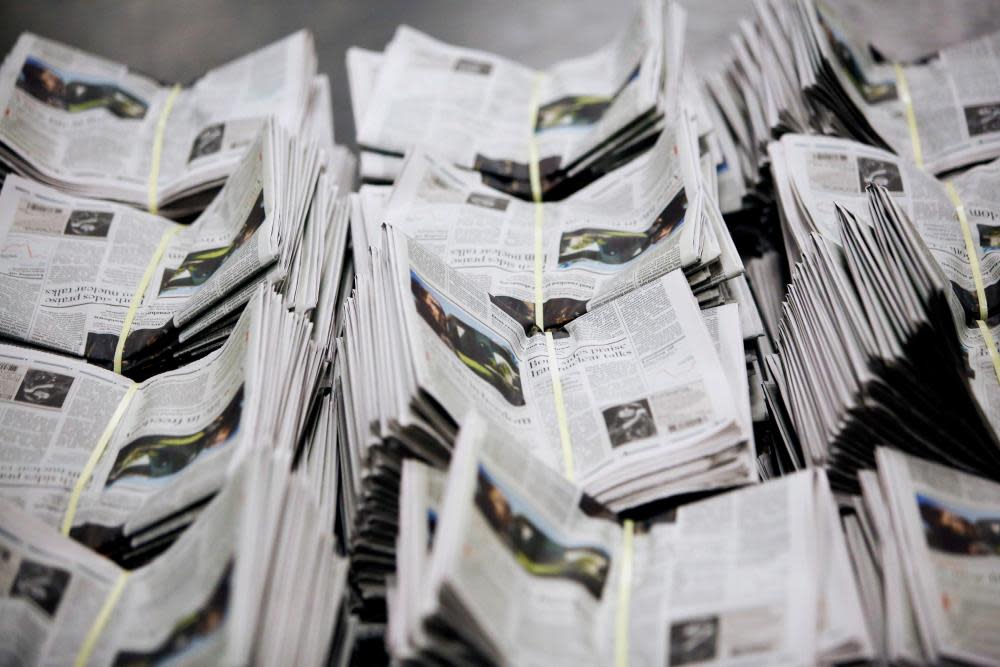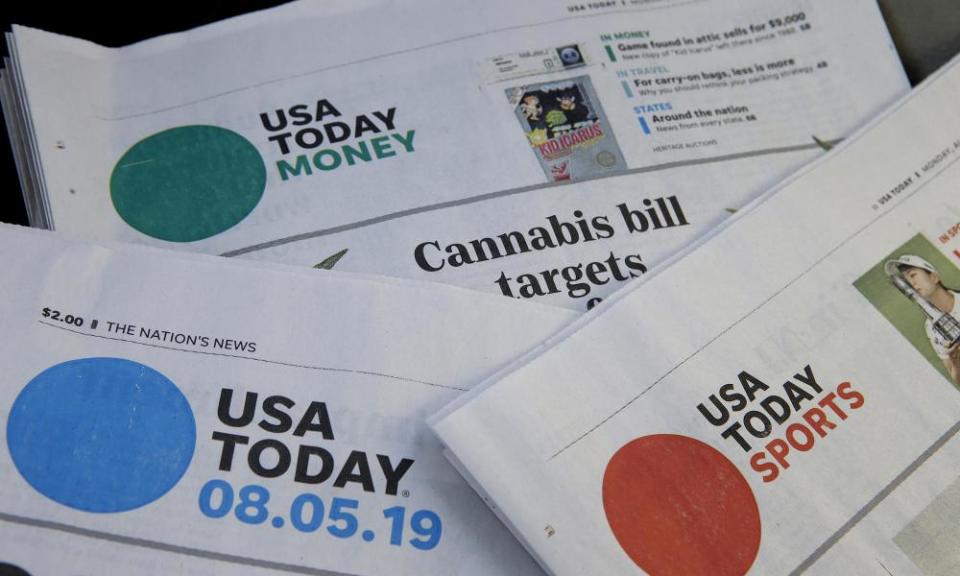US newspapers face 'extinction-level' crisis as Covid-19 hits hard

As journalists across the US scramble to cover the impact of the coronavirus, they are grappling with a bitter irony: as demand for their stories soars, the decline of the business model that funds them is speeding up catastrophically.
The devastating sweep of Covid-19 is the biggest story in a generation, and for most newspapers and news sites it has triggered record numbers of readers. Yet the virus, industry experts warn, will spell the end for “hundreds” of those organizations, laying off journalists and closing titles.
Media outlets across the US have already responded to a huge drop in advertising triggered by the economic shutdown by sacking scores of employees. Some newspapers, just as demand is at its highest, have stopped printing – reverting to a digital-only operation that is just as vulnerable to the whims of advertisers.
The decrease in advertising was swift, as businesses tightened spending due to the economic impact of Covid-19. For a journalism industry already barely scraping by, the impact was almost immediate.
In Louisiana, one of the states suffering the most from the coronavirus, the Times-Picayune and the Advocate furloughed 10% of its 400 staff, and switched the rest to four-day work weeks. The Plain Dealer, a daily newspaper in Cleveland, Ohio, laid off 22 newsroom staff – including its health reporter.

In Seattle, the weekly Stranger magazine said it was suspending publication, and temporarily laid off 18 employees. The Tampa Bay Times, Florida’s largest newspaper, has switched to a twice-weekly print edition after it lost $1m in advertising due to coronavirus. Paul Tash, the Times’ chairman and CEO, said he hoped to restore normal operations in the future, a message many news outlets have echoed.
Related: 'We were on borrowed time': coronavirus could strike final blow to local newspapers
However, some experts aren’t sure that many places will ever return to normal.
‘I think there’ll be hundreds, not dozens, of closures’
Penny Abernathy, the Knight chair in journalism and digital media economics at the University of North Carolina, predicts a swath of newspapers and websites will close.
“I think there’ll be hundreds, not dozens,” Abernathy said.
“An extinction-level event will probably hit the smaller ones really hard, as well as the ones that are part of the huge chains.”
Even before the coronavirus, the industry was in a precarious position, with smaller citywide or statewide news outlets particularly vulnerable.
About 1,800 newspapers closed between 2004 and 2018, as the number of people buying print editions dropped. As the journalism industry attempted to adapt to a world were people get their news online, Google and Facebook gobbled up the digital advertising that was barely keeping news organizations afloat.
It was a weak set of businesses that were already badly flagging
Ken Doctor, media analyst
“This is not a strong industry or a strong set of businesses going into the virus crisis,” said Ken Doctor, a media analyst at Newsonomics, which advises organizations on transitioning to digital media. “It was a weak set of businesses that were already badly flagging – that had lost revenue in a 5-10% range in 2019, in a great economy.”
Doctor said local newspapers are currently losing 30-60% of advertising due to the coronavirus, a revenue loss which is hitting an industry that “has very little resilience”.
Yet as staff have been cut and advertising money dried up, news organizations across the country have reported a surge in readers. Doctor said there had been a doubling in readership – “almost wholly attributable to coronavirus” and record ratings for cable news.

“For clear reasons,” Doctor said. “Given both that people are at home – and scared to death, trying to figure out something that none of us have ever lived through before.”
The coronavirus is a global story, but it is inherently local, too. People want to know how many cases have been reported in their neighborhood, what the latest health advice might be, even which parks are closed or open – all classic local news territory.
‘The model that supported local news for 200 years has collapsed’
Many towns and cities in the US have already lost that resource. In 2018 a study by Abernathy, at the University of North Carolina, found that 1,300 US communities have completely lost news coverage, creating what Abernathy dubbed “news deserts” – where local information and scrutiny of elected officials is non-existent.
As the journalism industry struggled, large media groups have swooped in to buy up local newspapers, laying off hundreds of journalists in the process. The newspapers owned by these big groups are just as vulnerable to the impact of the coronavirus – in some cases maybe more so.
Gannett, the largest local newspaper owner in the US, has lost a scarcely believable 94% of its value since August 2019, much of that loss coming since mid-February. The company said it would furlough staff across most of its newsrooms for one week each month, in what one newspaper union described as a 25% pay cut.
We can hope that it raises awareness and a willingness to pay for news
Penny Abernathy, University of North Carolina
Alden Global Capital, which owns more than 50 newspapers, has spent years buying up news organizations, then cutting staff to barely sustainable levels. The organization has issued more layoffs during the coronavirus outbreak, including at the notoriously besieged Denver Post, where the newsroom had already shrunk by 70% in recent years.
Lee Enterprises, which owns newspapers in 25 states, has announced across-the-board pay cuts, and said it would introduce furloughs.
If there is one bright spot, it’s that people could finally realize the dire state of the journalism industry.
In 2019 a Pew study found that 71% of people believe their local news organizations are doing well financially. At the same time, Pew found that just 14% had given money to any local news source in the past year.
“We can hope that it raises awareness and a willingness to pay for news,” Abernathy said. “And a willingness to think through new ways of paying for that news – whether it’s through your tax dollars that publicly fund things, or whether it’s actually understanding that newspapers need to charge you more than what they’ve charged you in the past. Because the for-profit model that supported local news for 200 years has collapsed.”

 Yahoo News
Yahoo News 
